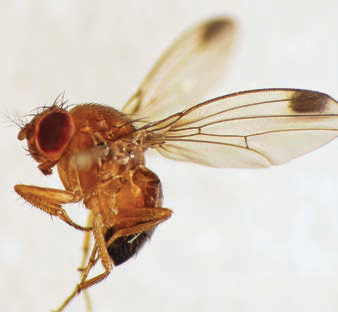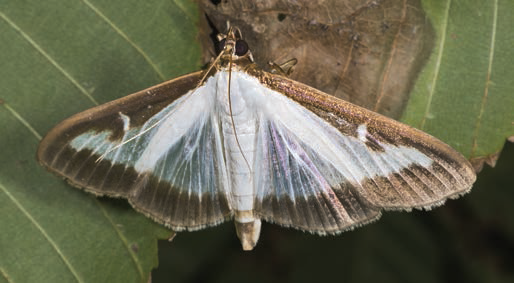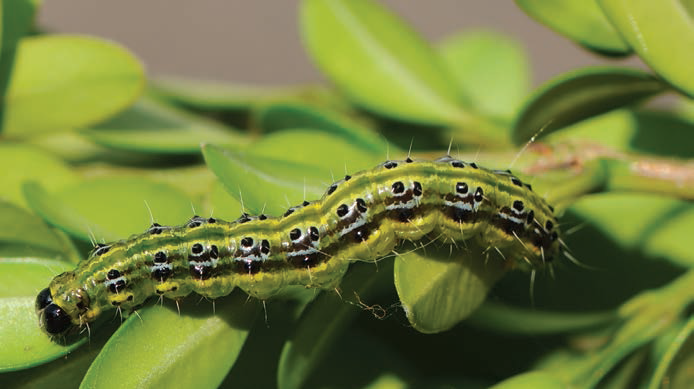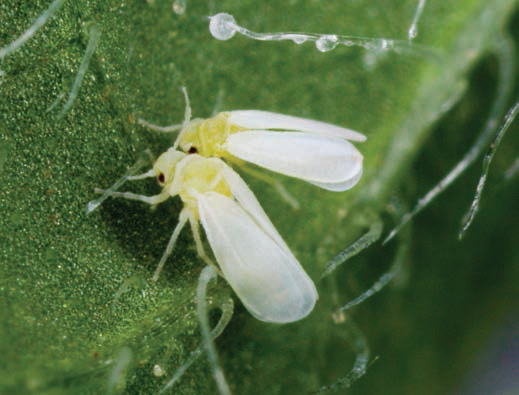Entomologist and IPM researcher, Dr. Michael Gaffney examines a range of existing and potential threats to the Irish horticulture
The increase in the global plant trade, the importation of horticultural produce, climate change and natural migration mean that we will continue to be challenged by the introduction of new insect pests. In the period 1951-2008, there were 65 alien invertebrate introductions into Europe, more than twice the 30 introductions between 1901-1950, with some people pointing to the increase in globalisation being the major factor; however the development of better surveillance and reporting of such findings in recent decades may also be a factor. Despite the best efforts of regulatory authorities, it simply won’t be possible to prevent non-native pests arriving on our shores. But one advantage we do have in Ireland is that usually the presence of an invasive pest in European countries is well advertised and we can prepare for its arrival. Still, as in the case of the Horse Chestnut leafminer, Cameraria ohridella (Introduced in 2013), Harlequin Beetle, Harmonia axyridis (Introduced in 2010) or Western Flower Thrips (Frankliniella occidentalis) (Introduced in 1987), despite being forewarned there was little that could practically be done to prevent pests becoming established in Ireland. For insect pests to become established there needs an opportunity for colonisation, a suitable habitat and a lack of resistance by native competitors or predators. Some other insects which may pose a specific challenge to Irish horticulture in the short term are discussed below.
SPOTTED WING DROSOPHILA

PHOTO BY MARTIN COOPER, UK VIA CREATIVE COMMONS
A case in point is the recent arrival of Drosophila suzukii (Spotted Wing Drosophila) into Ireland. Its name comes from the distinctive spot on each wing of the male flies. This Asiatic fruit fly first entered Europe in 2008 through Spain and Italy and has since spread throughout most of Europe, arriving in the UK in 2012 and Scotland in 2014. It was trapped at two locations in June of this year, Dublin and Wexford and given the short time between the setting of the traps and the first captures, it’s very probable that this pest had been in Ireland for a number of months. Many fruit flies infest overripe fruit; what makes the Spotted Wing Drosophila a pest is its trait of laying its eggs in ripening fruit. The females possess a large, saw-like ovipositor, which allows her to pierce the hard skin of ripening fruit to lay her eggs. Each female has the ability to lay hundreds of eggs and there can be up to 13 generations of this pest in a single year, although a figure of closer to 10 is more likely for Ireland. Once the eggs hatch inside the fruit, the larva starts to feed, causing hollow depressions in the fruit which make it unmarketable. Some soft fruit farms in Europe and the United States have reported yield losses of up to 100% due to this pest, therefore effective monitoring and tracking of its spread through Ireland will be critical to minimising crop losses.
BOX TREE CATERPILLAR


PHOTO BY DIDIER DESCOUENS VIA CREATIVE COMMONS
Another recent arrival from Asia is causing significant damage to Buxus in the UK, the moth Cydalima perspctalis or Box Tree caterpillar. The moth originally arrived in Germany in 2006 and reported in the UK in 2008, with caterpillars being observed in some private gardens in 2011. A significant population seems to have established in gardens in London over the last 18 months. To date, there is no report of this moth being present in Ireland. The larvae of this pest are green/yellow in colour, with a black head (similar in appearance to the Large Cabbage white butterfly caterpillar). They severely and rapidly defoliate box hedging, while also producing webbing over the area where they are feeding. They lay their yellow coloured eggs on the underside of the leaf, in a flat sheet pattern. As the eggs mature, a black spot is visible, which is the developing head of the caterpillar. This ‘webbing cover’ reduces the efficacy of insecticides making caterpillars difficult to control with foliar insecticides. Without larval control, this feeding will ultimately kill the plant. Recent development studies on this pest indicate that it’s likely to only be able to complete a single generation in Ireland, whereas it is predicted to be able to complete two full generations in southern and central Europe; however it is still likely to become a pest in Ireland. Once day length falls below 13.5 hours the third instar (third larval stage) will go into diapause (a period of suspended/ delayed development) and a cold period of 6 to 8 weeks is required for the larva to terminate diapause. It is unclear how this moth first entered the UK, whether it was natural migration or through infested plant material it’s likely to be able to follow the same route into Ireland.


PHOTO BY BÖHRINGER FRIEDRICH VIA CREATIVE COMMONS
TOBACCO WHITEFLY


PHOTO BY STEPHEN AUSMUS VIA WIKIMEDIA COMMONS
Bemisia tabaci is frequently intercepted at Irish ports and findings in Ireland have been successfully eradicated to date. Indeed in 2010, we had an outbreak on poinsettia crops in Kinsealy, which resulted in the disposal of 70% of the plants. At that time, findings of B. tabaci on imported poinsettia plugs were becoming more frequent, but a concerted effort by the plant raisers to increase plant hygiene has decreased the frequency of findings in recent years. This whitefly has a broad host range, can cause plant damage through direct feeding and the transmission of the virus, such as the Tomato Leaf Curl Virus. Originally B. tabaci is thought to originate from India, but by the mid1980s reports of the evolution of a new biotype (Biotype B) emerged. This biotype, commonly referred to as the Silverleaf or poinsettia strain lays twice as many eggs as the original B. tabaci and is now considered a separate species, B. argentifolli. Morphologically, it is indistinguishable from B. tabaci and can be only separately identified either by molecular methods or by observing phytotoxic disorders on certain infested plants, a trait which the original B. tabaci biotype is unable to do. To date, several biotypes (up to S) have now been identified, and studies have shown that these biotypes can interbreed, which has led to the theory that B. tabaci is made up of a complex of species, rather than each new biotype being a separate individual species. This may go some way towards explaining the extreme polyphagous nature of this pest, along with its ability to rapidly become resistant to insecticides.
BEST PRACTICE
In order to try and minimise risk on your nursery, some general procedures should be adopted. Plants should be purchased from trusted suppliers, with the appropriate plant passport and phytosanitary certificates. Once on the nursery, new plants should be quarantined and monitored in a separated section of the nursery. If you suspect the presence of a notifiable organism or you find a pest you are unfamiliar with, then you should contact the Department of Agriculture, Food and the Marine for guidance.
Thankfully given our location, island status and work of our regulatory authorities the rate of new insect pests economically damaging to horticulture in Ireland has been relatively low, but the recent introduction of spotted wing drosophila reminds us that while we need to remain vigilant, new pest introductions will occur and we need to be able to react quickly when this happens. For more information on invasive insects of agricultural and horticultural importance, please visit www.eppo.int. ✽
  |







